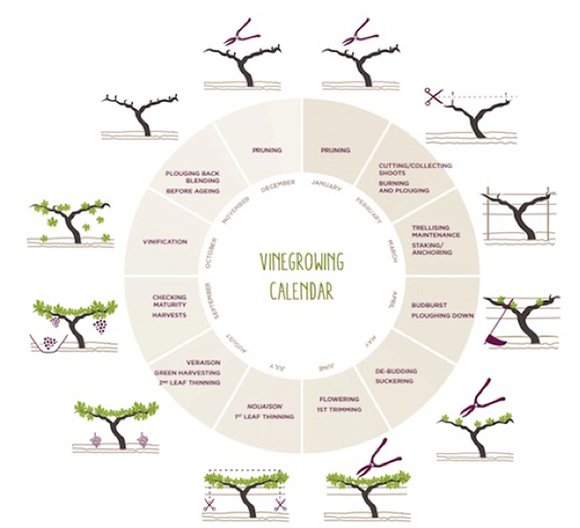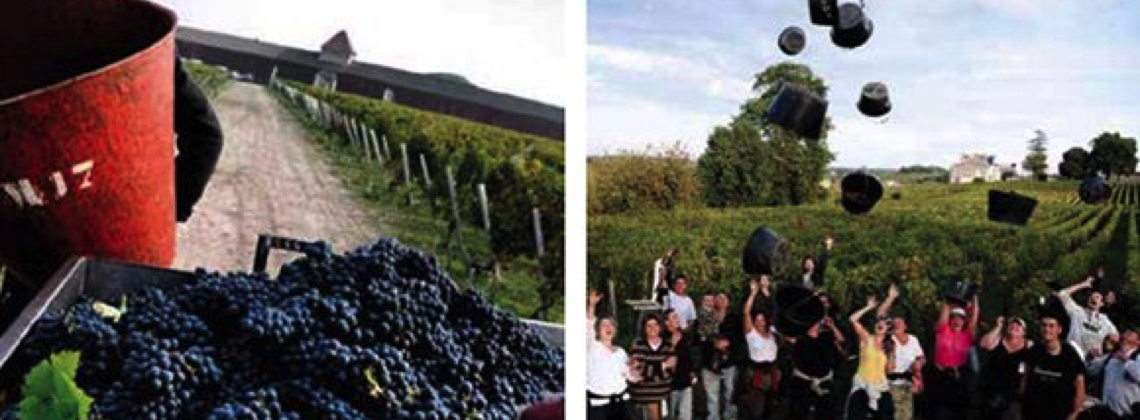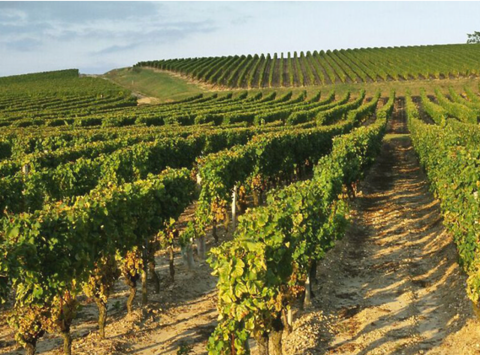Bordeaux Harvest 2015
Of course it’s also the most nerve-wracking, especially if the weather has been unkind throughout the year.Luckily this year is set to be one of the best, and with an exceptionally warm summer, getting up to 40 degrees Celsius on some days, the outlook couldn’t be better.
In fact the warmer weather has even forced an earlier than usual harvest and some Châteaux have already been busily harvesting their crop, having finished the white grape harvest already. And the good weather during the harvest has allowed the grapes to reach their optimum maturity in a perfectly healthy way.In the run up to harvest a few things take place in the vineyards.
First there’s the ‘veraison’ or ripening that happened in August, when the grapes change colour. Then there’s the ‘éclaircissage’, which means the removal of excess leaves and some of the grapes to keep only the best on the vine. If the temperature is hot, sometimes the excess leaves are left on so that the sun doesn’t burn and damage the vines’ bark.

The main challenge is to carefully watch the maturation of the grapes and to pick them at the right moment: a berry picked too early will produce an acidic wine, while a berry picked too late will lose its aromatic vigour. Winemakers at this time of the year are regularly analysing the sugar level and acidity of the grapes but also rely on the palate.
Some châteaux even use new technologies such as drones that fly over the vineyards to monitor growth.During the harvest, depending on the size of a vineyard, a Château might employ dozens of pickers (usually seasonal workers, who can do anything from picking grapes to sorting), working long days over a period of 1-2 weeks, carefully picking the grapes by hand. Some châteaux with advanced technology might also use machines to help with the harvest.
The grapes are then poured into a de-stemmer to rid them of their stalks. After they will run through a conveyor belt to be sorted, to keep the best fruit. This can be done by hand: this is a true time-consuming labour of love. With newer technology this might be done mechanically, but many Bordeaux winemakers prefer to do it by hand, maintaining traditions on their winemaking process. The cherry-picked grapes are then collected into giant vats to be crushed and macerated into wine juice.
Some wines will ferment in barrels or stainless steel vats and some can stay in for many months. The final, most personal process, which reflects the skills and the ‘savoir faire’ or know-how of the winemaker, is the art of assemblage or blending: the winemaker will blend wines from different grapes to create his own unique style, expression of the vintage and reach the perfect balance.The first to be harvested were the dry white wines, with the Sauvignon Blanc harvest kicking off at the end of August into early September.
The golden Sémillon grape harvest followed around the 10th of September. As for the red grapes, Merlot were first to be harvested mid-September, followed by Cabernet Sauvignon and Cabernet Franc grapes the following week. At the same time,the sweet white grape harvest began and will continue into October.So far, an analysis of this year’s grapes implies a promising vintage for 2015. Baron Philippe de Rothschild recently stated, “this year’s vintage could be an exceptional harvest – as good as the legendary 1982”. A big statement to make, but judging by the weather and conditions for growth in the Bordeaux region, he may just be right. Time will tell!To find out more about more about Bordeaux winemakers, watch our videos here !


